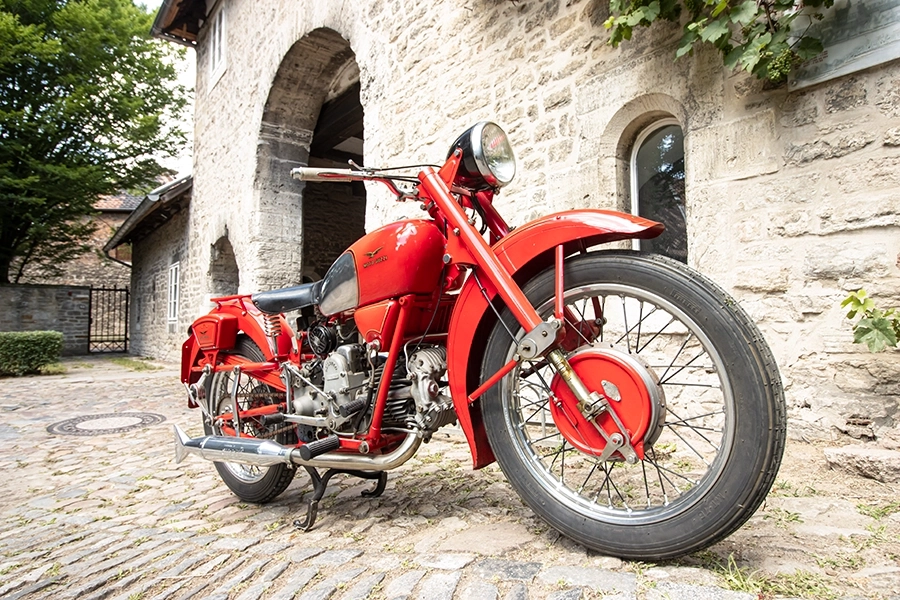Guzzi Falcone
Guzzi's single cylinder: Falcone
Guzzi's last horizontal 500 single-cylinder. They were considered modern and reliable and, together with the stable chassis, ensured that Guzzi became Italy's largest motorbike manufacturer in the 1930s. The famous Falcone, one of which I got in front of my lens, represented the Italian sporting elite in 1950.
A priceless dream for most Italians, who tended to go for cheap scooters at the time. Nevertheless. With its upside-down fork, characteristic flywheel, four-speed gearbox and modern magneto ignition, the 23 hp Guzzi really scored points.
For me, it scores points above all for its looks.

There was also a weaker version of the Falcone, with leg shields and wide handlebars, which became the favourite of the carabinieri. With 19 hp, it was not quite as sporty, but it scored points for its reliability. The Falcone Sport was produced from 1950 to 1964. Production of the official model ended in 1967.
My photo model is one of the first Falcone, recognisable by its fancy dovetail exhaust. All civilian Falcons have the red paintwork in common. The only differences are the lines and the paint on the tank. But changes were also made to the technology, although these were kept within manageable limits.
In the beginning, there was still a manual ignition adjustment, later this was replaced by an automatic ignition. The foot brake was also modified; on the Sport, the footrests were mounted further back. Apparently, at the very beginning of production, the brakes were still applied with the heel. Later models could then be stopped with the tip of the foot.
The engine was the tried and tested air-cooled single-cylinder unit. With a slightly higher compression ratio and a larger carburettor than in the Tourismo, the engine produces 23 hp at 4,500 rpm and accelerates the 170-kilogram motorbike to 135 km/h. The engine is also used in the Tourismo.
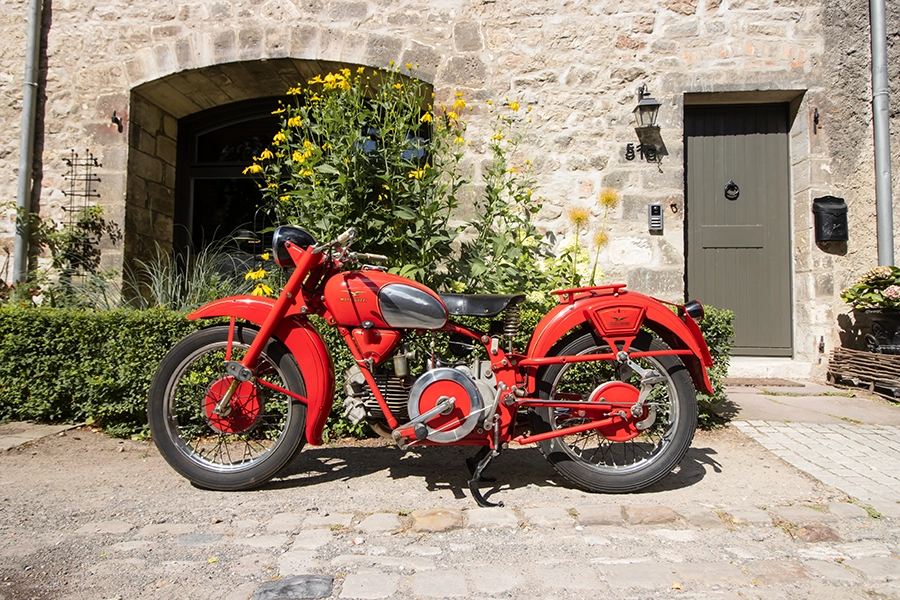
The chassis kept the bike on the track quite adequately. Particularly eye-catching is the fancy friction damper on the rear swingarm with cantilever suspension. This is supported by a tail boom.

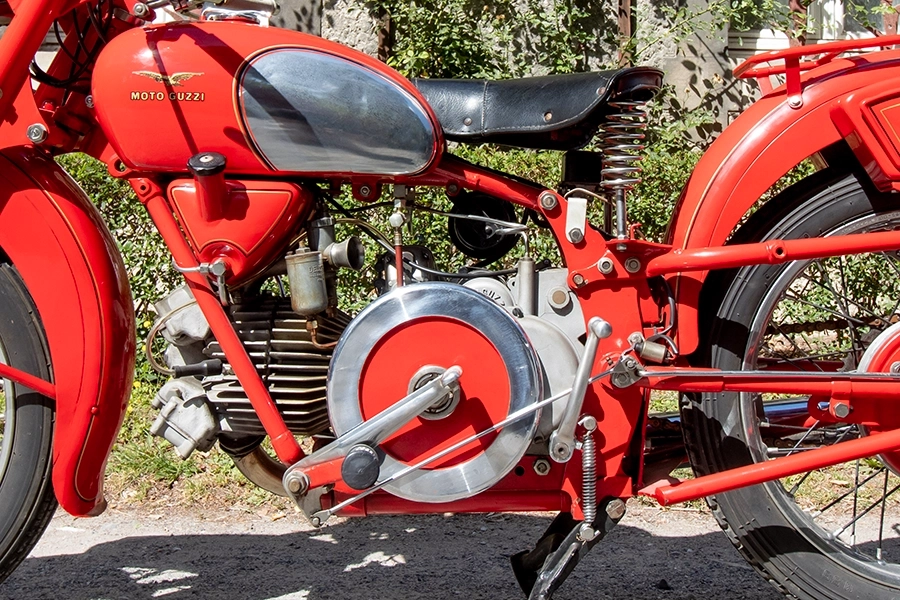
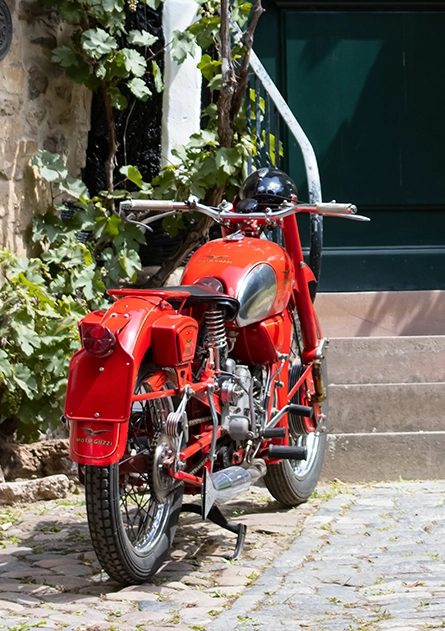
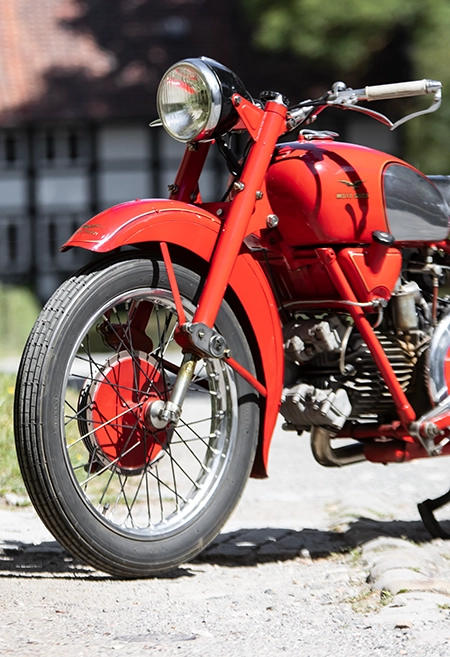

The successor to the Falcone - the Nuovo Falcone - was a disappointment born of necessity in 1969. Apart from the engine, the Nuovo had nothing in common with the original Falcone. Only the authorities were satisfied with this machine and flew with it until the nineties.
In the civilian sector, the weak and heavy new Falcon could not establish itself. But that was not necessary, because the brand new, powerful two-cylinder V7 dominated the Guzzi world from then on.
All in all, the photo shoot for Stein-Dinse GmbH proved to be very instructive and gave me (us) a nice insight into the technical history of one of Italy's most famous motorbike manufacturers.
